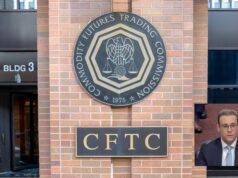As Bitcoin continues to gain traction among institutional investors and global markets, experts forecast a meteoric rise in its price. Projections are reaching as high as $200,000 by 2025. Despite the looming U.S. presidential election, which often creates uncertainty across financial markets, analysts argue that Bitcoin’s long-term trajectory remains intact. The cryptocurrency’s growth, they assert, is driven by macroeconomic factors such as rising inflation, increasing institutional adoption, and the gradual clarification of regulatory frameworks. Whether it’s Donald Trump or Kamala Harris who assumes the U.S. presidency in 2024, Bitcoin’s momentum appears unstoppable.
Institutional Adoption Drives Bitcoin’s Rise
A key driver of Bitcoin’s projected surge is its growing appeal to institutional investors. Companies like MicroStrategy, led by Bitcoin bull Michael Saylor, have steadily increased their Bitcoin holdings. MicroStrategy’s Bitcoin stash is now worth over $14.6 billion, and the company shows no signs of slowing down. They recently issued $700 million in convertible notes to buy even more of the cryptocurrency. This large-scale institutional buy-in is one of the most significant factors supporting the predictions of Bitcoin’s price reaching six figures in the coming years.
The influx of institutional capital is also indicative of a broader trend. Bitcoin is increasingly viewed as a hedge against inflation, much like gold. With global inflation rates rising, particularly in the U.S. and Europe, many institutional investors are turning to Bitcoin as a store of value. This shift is bolstered by the idea that Bitcoin’s fixed supply of 21 million coins makes it inherently deflationary. That is a critical selling point in an environment of rising prices and currency devaluation.
Election Won’t Deter Long-Term Growth
While the U.S. presidential election often creates volatility in traditional financial markets, analysts suggest that Bitcoin’s decentralized nature and unique economic properties make it less susceptible to such events. Standard Chartered, one of the leading financial institutions making Bitcoin price forecasts, has been particularly vocal in its predictions. The bank believes Bitcoin will hit $200,000 by the end of 2025, regardless of the election outcome.
This bullish projection stems from Bitcoin’s increasing role as a global asset, largely unaffected by local political developments. Whether Trump, known for his pro-business stance, or Harris, who could introduce more comprehensive regulatory frameworks, takes office, Bitcoin is expected to maintain its upward trend. Analysts argue that the fundamentals of Bitcoin are much more closely tied to macroeconomic factors – such as interest rates, inflation, and institutional demand – than to political administrations.
Macroeconomic Factors Behind the Surge
In addition to institutional adoption, the broader economic environment continues to create ideal conditions for Bitcoin’s growth. Rising global inflation and the threat of recessions have led many investors to seek alternative assets that can preserve value over the long term. Bitcoin’s decentralized, borderless nature and its increasing recognition as “digital gold” make it an attractive choice.
Moreover, regulatory clarity is slowly but surely emerging. Recent regulatory developments in the U.S. and Europe point to a future where the global financial system will fully integrate Bitcoin and other cryptocurrencies. This growing legitimacy is reassuring to retail and institutional investors, who had previously been cautious due to regulatory uncertainties. The introduction of Bitcoin ETFs and the growing possibility of Bitcoin-backed financial products, such as loans and bonds, further cement Bitcoin’s place as a legitimate asset class.
Conclusion: A Bullish Outlook Despite Political Uncertainty
While the 2024 U.S. election may cause temporary market fluctuations, the overall outlook for Bitcoin remains overwhelmingly positive. Institutional adoption continues to grow, and macroeconomic conditions make Bitcoin a more attractive asset for investors seeking a hedge against inflation. With forecasts from Standard Chartered and other financial experts predicting Bitcoin’s price will reach $200,000 by 2025, it’s clear that the cryptocurrency’s long-term growth will be driven by far more than political events.
The market’s focus remains on Bitcoin’s role as a store of value, its limited supply, and its increasing institutional acceptance. As such, short-term political shifts are unlikely to derail its bullish momentum. Whether under Trump or Harris, Bitcoin’s path to $200,000 – and beyond – appears firmly set in motion.
Readers’ frequently asked questions
How does institutional adoption directly affect Bitcoin’s price stability?
Institutional adoption brings a higher level of liquidity and maturity to the Bitcoin market. That has a direct impact on its price stability. As more institutions – such as hedge funds, corporations, and financial institutions – invest in Bitcoin, it leads to greater trading volumes and deeper markets. This increased liquidity allows for smoother price movements, reducing the chances of extreme volatility from large trades or market shocks. Additionally, institutional investors tend to adopt longer-term strategies than retail traders, creating a more stable demand for Bitcoin over time. The capital inflow from institutions boosts market confidence and provides a strong foundation for sustained price growth, mitigating the risk of sudden price crashes.
What role do Bitcoin ETFs play in increasing institutional and retail participation?
Bitcoin ETFs (Exchange-Traded Funds) serve as a bridge for institutional and retail investors to gain exposure to Bitcoin without directly owning or managing the underlying asset. ETFs simplify investing in Bitcoin by allowing participants to buy shares of a fund that tracks Bitcoin’s price. That is similar to how investors buy shares in a stock index fund. This structure provides a familiar investment vehicle regulated and traded on traditional stock exchanges. As ETFs become more widely available and gain regulatory approval in various jurisdictions, they make it easier for institutional investors, such as pension funds and asset managers, to include Bitcoin in their portfolios. This increased accessibility can lead to higher demand for Bitcoin. When more investors feel comfortable participating in the market, it drives prices up.
How does Bitcoin’s fixed supply influence its price in an inflationary environment?
Bitcoin’s fixed supply of 21 million coins creates a scarcity effect, playing a critical role in its price appreciation, particularly in inflationary environments. Unlike fiat currencies, which governments can print in unlimited quantities, Bitcoin’s supply is capped and programmed into its code. As inflation erodes the purchasing power of traditional currencies, investors often seek assets that are scarce and resistant to devaluation. This is why Bitcoin is frequently compared to gold as a store of value. In periods of high inflation, demand for Bitcoin typically increases because its fixed supply makes it an attractive hedge against the decreasing value of fiat money. This rising demand, coupled with Bitcoin’s limited supply, drives its price upward. That reinforces its reputation as a deflationary asset in the context of a volatile economic landscape.
What Is In It For You? Action Items You Might Want to Consider
Consider Gradually Increasing Your Bitcoin Holdings in Anticipation of Long-Term Gains
With forecasts predicting Bitcoin could reach $200,000 by 2025, now may be a good time to start building or expanding your Bitcoin position. Dollar-cost averaging (DCA) could be a smart strategy to mitigate short-term volatility while benefiting from the projected long-term price growth driven by institutional adoption and macroeconomic trends.
Stay Informed on Regulatory Developments and Bitcoin ETFs
Keep a close eye on upcoming regulatory changes and the potential launch of more Bitcoin ETFs. These financial products are expected to boost Bitcoin’s accessibility for both retail and institutional investors, which could drive significant demand. Understanding how these developments unfold can give you an edge in timing market opportunities.
Prepare for Short-Term Volatility Around the U.S. Election
Although long-term predictions remain bullish, the 2024 U.S. presidential election could create short-term market fluctuations. Be ready to adjust your positions accordingly. Consider using limit orders or stop-loss strategies to protect your trades from sudden price swings during this period of political uncertainty.










